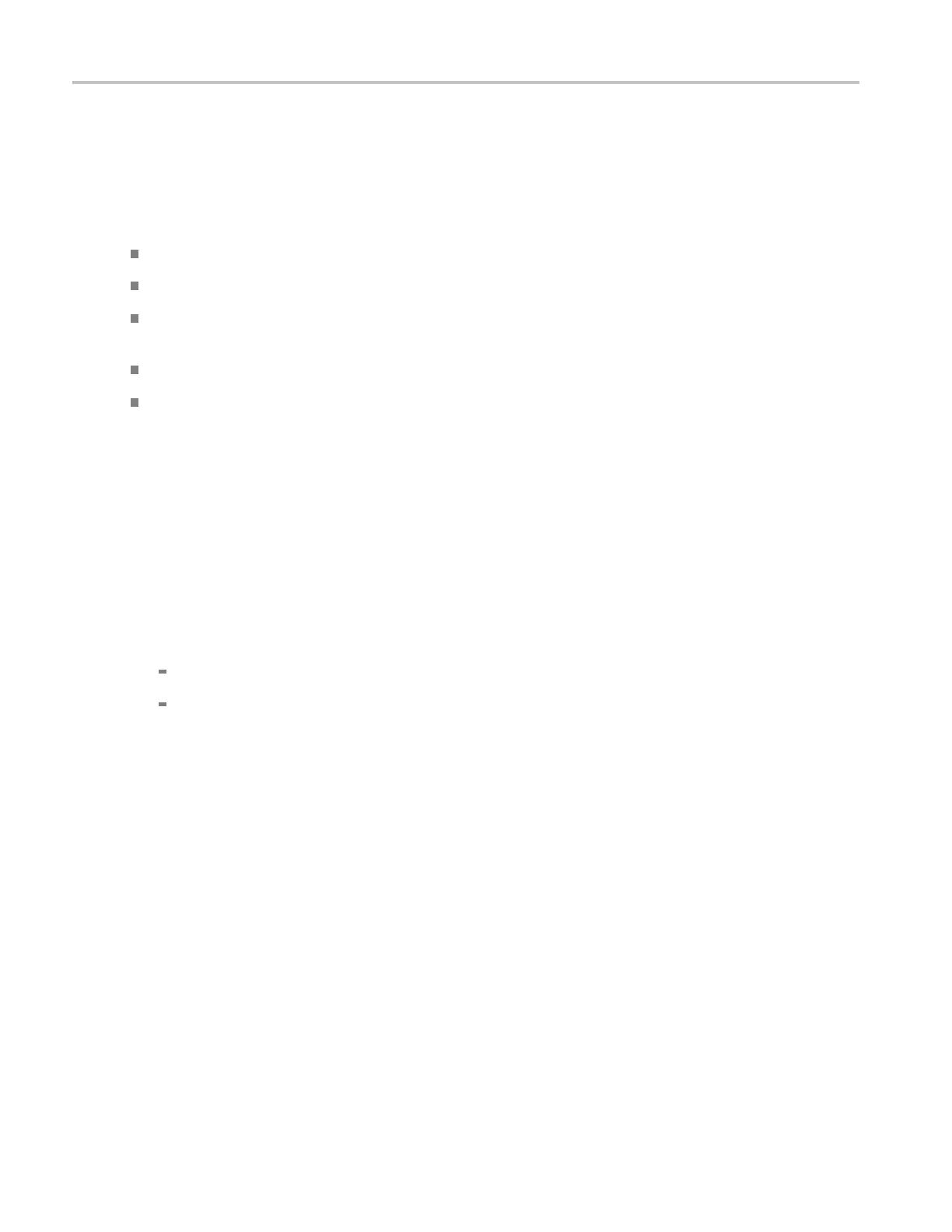Oscilloscope Reference Trigger coupling
Trigger coupling
The trigger coupling determines what part of the signal is passed to the trigger circuitry. All trigger types
except edge triggering use DC coupling only. Edge triggering can use all available coupling choices.
DC. This coupling passes all input signals to the trigger circuitry.
AC. This coupling passes the input signals above 60 Hz to the trigger circuitry.
HF Reject. This coupling attenuates signals above 50 kHz before passing the signal to the trigger
circuitry.
LF Rej. This coupling attenuates signals below 80 kHz before passing the signal to the trigger circuitry.
Noise Rej. This coupling provides stable triggering by increasing the trigger hysteresis. Increased
hysteresis reduces the trigger sensitivity to noise but may require greater signal amplitude.
Set the glitch width criteria
These controls specify the action of the glitch width criteria. The trigger graphic displays the criteria
you have selected.
1. Click in the Width entry box and set the width with the multipurpose knob.
2. Use th
e G litch Width drop-down list box to specify the action:
Less Than. Triggers the instrument only on glitches narrower t han the specified width
Greater Than. Triggers the instrument only on pulses wider than the specified width.
924 DSA/DPO70000D, MSO/DPO/DSA70000C, DPO7000C, and MSO/DPO5000 Series

